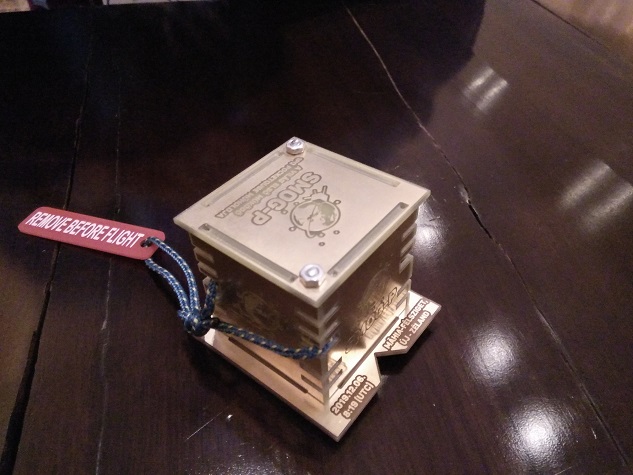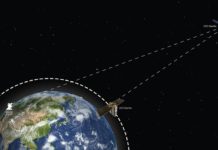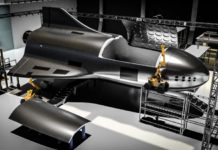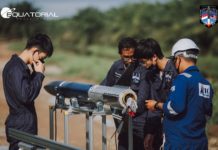In Part 1 of this 2-part interview series, SpaceTech Asia interviewed János Solymosi, Founder & Director for Aerospace & Defense at BHE Bonn Hungary Electronics (BHE), on the traditional space industry in Hungary.

Also during Singapore’s annual Global Space & Technology Convention (GTSC) which took place earlier this month, we spoke with Levente Dudás, Communicational & System Engineer of the Hungarian CubeSat & PocketQube Satellite Projects, Budapest University of Technology and Economics.
For the second part of this series, we found out more about Hungary’s bourgeoning small satellite programme, including the details of the first Hungarian satellite, MaSat-1, and the newest operational satellite, Smog-P, which is a PocketQube launched in December 2019.
What was the first satellite built by Hungary?
In cooperation with private companies and the academic sector in Hungary, we decided to build the first Hungarian satellite in 2007. A group of students formed the satellite development team, and after 5 years’ development, we realized MaSat-1, the first Hungarian satellite, which was launched using ESA’s Vega-1 from Kourou. It lasted approxinately 2.5 years in space, in orbit and in operation. After 1062 days in operation, MaSat-1 was burned in the atmosphere.
This was the first Hungarian satellite to be able to demonstrate that between the team, our knowledge, and collaboration between companies and academic sector, Hungary is able to build the whole satellite. Not only subsystems like electrical power systems, data handling on-board computers, and communications systems between the satellite and ground stations, but the satellite as a whole. And we are continuing this satellite development.
After that, you developed Smog-P and Smog-1, and launched Smog-P in December 2019. Could you tell us more about that?
MaSat-1 is a 1U cubesat. The mass is less than 1kg – 998.5g only, and during the MaSat-1 operations, we at the Budapest University of Technology decided to form another group of students, a satellite development team. We wanted to realize the smallest satellite in the world a 5x5x5 cm, PocketQube.
So we developed Smog-P and ATL-1.
In 2013, we started the Smog-P development, choosing a PocketQube, because the launch cost is much lower than the 1U cubesat. For example, we had to pay about EU25,000 for the launch of Smog-P. After 4.5 years’ development of Smog-P, it was launched last year on 6 Dec, from Rocket Lab’s Electron rocket, in New Zealand.
At the same time, we also launched ATL-1, which is 2 times larger; ATL-1 is a commercial satellite supported by the company ATL, whereas Smog is an academic-sector satellite made by students.
The main payload of Smog-P is a spectrum monitoring system. It is able to monitor the radiated radio frequency signals from the Earth to space caused by DVB-T television transmitters all around the world, which heat the atmosphere, and disturb the communication systems of the satellite and the ground station. Since ETs cannot watch DVB-T TV channels, there are no human beings 300 or 400km above the ground, all this is lost power. So the main payload of Smog-P is this radio-frequency monitoring, working on the 460 to 860 MHz DVB-T band.
And the secondary payload of Smog-P is a total ionizing dose measurement system to be able to forecast the operational lifetime of the on-board electronics. This is because those satellites are made by only industrial components, not space-qualified components. And we want to forecast the operation lifetime of the satellite.
How is Smog-1 different from Smog-P?
In the case of Smog-1, the secondary scientific payload is a de-orbiting mechanism to be able to decrease the space debris time. The operation of the on-board electronics is limited, about 2 or 3 years only, but the trajectory of the satellite is 600km above the ground and the lifetime of the orbit is more than 18 years. So, the difference between 18 years and 2-3 years operational lifetime is space debris. We want to decrease this and limited it to, for example, 4-5 years.
Smog-P could not contain this spatial-magnetic material that is the third payload of Smog-1, because the trajectory is only 365 km above the ground, and the orbit lifetime is limited to only 6-8 months. But it is enough time to be able to make the measurements – the DVB-T signal measurements – so this 6-9 months lifetime is not so important.







